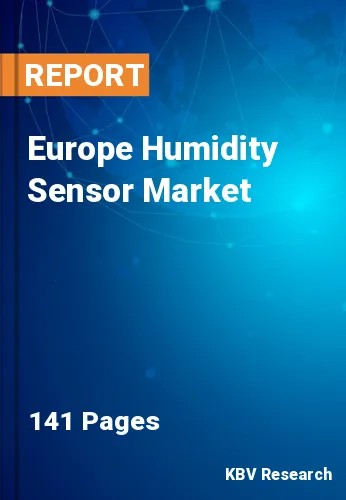The Europe Humidity Sensor Market would witness market growth of 8.7% CAGR during the forecast period (2023-2030). In the year 2020, the Europe market's volume surged to 555.8 thousand units, showcasing a growth of 8.7% (2019-2022).
In agriculture, humidity sensors are instrumental in precision agriculture practices, enabling farmers to monitor and manage microclimatic conditions essential for crop growth, pest control, and irrigation management. By integrating humidity sensors with data analytics and automation technologies, farmers can optimize resource utilization, enhance crop yields, and mitigate environmental risks. Therefore, the France market make use of 8.6 thousand units in environmental & agriculture in 2022.

The Germany market dominated the Europe Humidity Sensor Market by Country in 2022, and would continue to be a dominant market till 2030; thereby, achieving a market value of $135.6 million by 2030. The UK market is exhibiting a CAGR of 7.7% during (2023 - 2030). Additionally, The France market would experience a CAGR of 9.5% during (2023 - 2030).
The humidity sensor market has witnessed significant growth and evolution in recent years, driven by the increasing recognition of the importance of environmental monitoring across various industries. Humidity sensors, also known as hygrometers, play a crucial role in measuring and controlling moisture levels in the air, making them integral components in a wide range of applications. The adoption of humidity sensors has seen a steady rise across diverse industries, propelled by the growing awareness of the impact of humidity on processes, products, and human comfort. Integrating humidity sensors into building automation and Heating, Ventilation, and Air Conditioning (HVAC) systems has become commonplace.
Additionally, smart buildings leverage these sensors to create comfortable and energy-efficient environments, adjusting climate conditions based on real-time humidity data. In addition, agriculture has witnessed a transformative impact by adopting humidity sensors in precision farming. These sensors aid farmers in optimizing irrigation, crop health monitoring, and greenhouse management, contributing to increased agricultural efficiency and resource conservation. These sensors contribute to a better understanding of environmental changes and their impact on ecosystems.
Humidity sensors are integrated into climate control systems within vehicles to ensure optimal comfort for passengers. In Italy's automotive sector, where the emphasis is placed on enhancing the driving experience, these sensors contribute to maintaining the desired humidity levels inside the car. Thus, Europe's increasing aerospace and automotive sectors will lead to increased demand for humidity sensors in the region.
Free Valuable Insights: The Global Humidity Sensor Market will Hit USD 2.3 Billion by 2030, at a CAGR of 9.2%
Based on Type, the market is segmented into Absolute, Relative and Others. Based on End User, the market is segmented into Automotive, Pharmaceutical & Healthcare, Industrial, Food & Beverages, Building Automation & Domestic Appliances, Environmental & Agriculture and Others. Based on countries, the market is segmented into Germany, UK, France, Russia, Spain, Italy, and Rest of Europe.
By Type (Volume, Thousand Units, USD Billion, 2019-2030)
By End User (Volume, Thousand Units, USD Billion, 2019-2030)
By Country (Volume, Thousand Units, USD Billion, 2019-2030)
Our team of dedicated experts can provide you with attractive expansion opportunities for your business.

